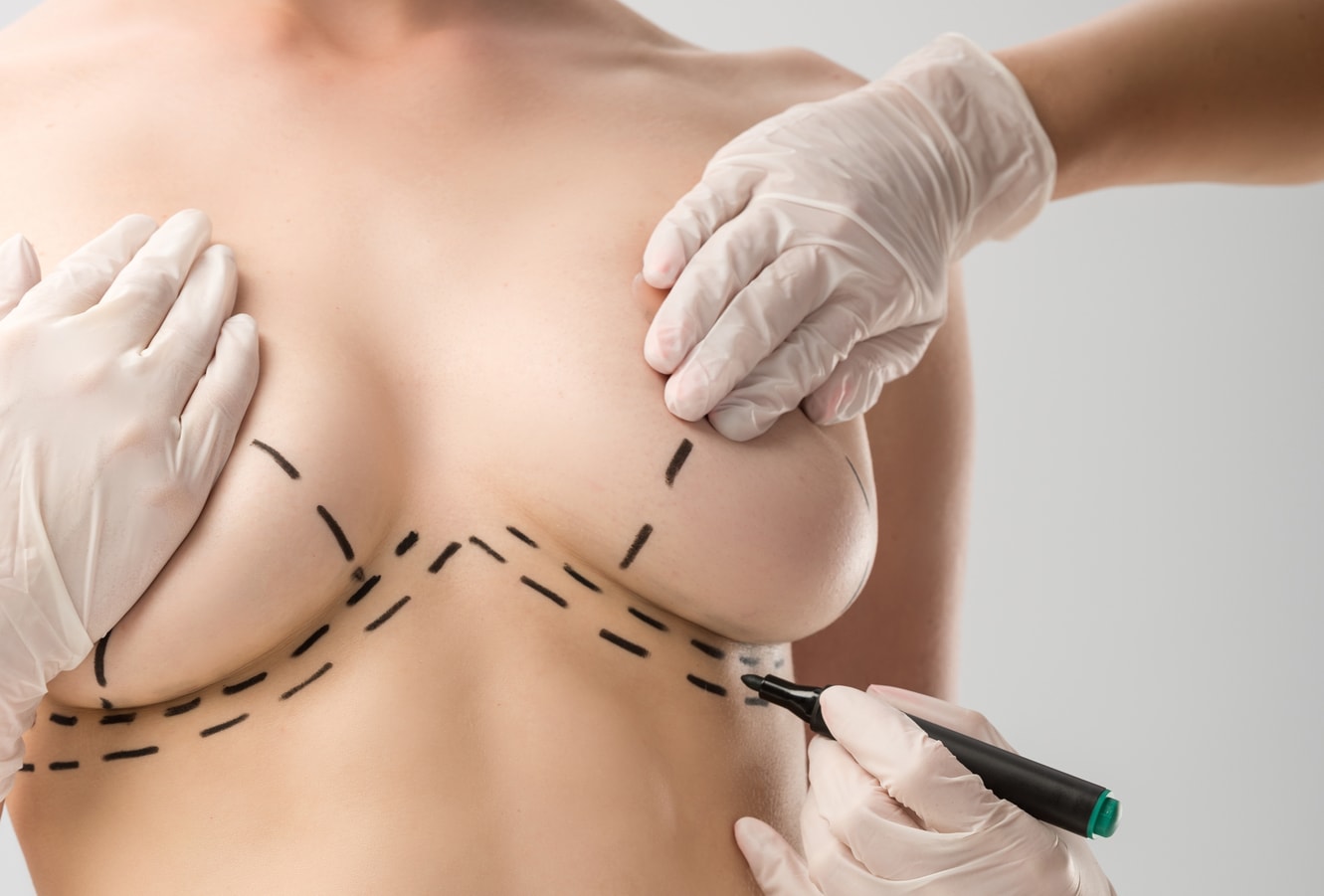
The purpose of a crescent breast lift is to improve the position of the nipple relative to the breast gland. Most aging breasts change their shape due to age, breastfeeding, or breast disease. The common feature of the change is that the nipple position is lower than ideal. An ideal nipple position is either at the equator of the breast or just a little bit above it. A crescent breast lift is a way of putting the nipple into a higher, more attractive position on the breast gland.
There are different ways the crescent breast lift can be approached. The technique that is decided upon for a patient typically depends on how much of a lift is necessary. It is fair to say that an anchor lift is reserved for people who have the most droop to their breast. A vertical lift can be considered for people who are not quite as severe but still have a significant distance that the nipple needs to be moved. A crescent lift is used in cases where the nipple does not have to travel far to achieve the ideal look or position for the patient. The crescent lift is for minor breast sagging issues.
There is a rule of thumb that most people follow when deciding if a crescent breast lift is best for them. If the nipple position needs to be raised no more than 2cm or 2.5cm, then the crescent lift should be used. If the nipple needs to move greater than that distance, then the anchor lift or vertical lift will produce better results.
The typical crescent breast lift patient is somebody who has a mild to moderate droop or lower nipple position. Age and breastfeeding are two main causes for droop. If the nipple does not have to move far, the crescent lift is a good choice.
When it comes to a crescent breast lift, the term crescent applies to the shape of the skin that needs to be removed. Imagine a half-moon crescent shape turned upside down above the nipple. That is the amount of skin that is removed during a crescent lift. A surgeon makes the crescent, excises the skin, and slides the nipple into a higher position. It is usually sealed with a purse string. The scar that remains encircles the areola. The scar does not extend below the areola towards the lower part of the breast. When the wound or incision is closed, what is left is a circular incision on the periphery of the areola.
The anchor lift has components that go down to the crease underneath the breast. It extends from the nipple down to the inferior breast crease underneath the breast and then goes across into the crease. Meanwhile, the crescent half-moon shape is placed above the nipple.
The main limitation is that the crescent lift cannot go beyond 2cm or 2.5cm. Anyone trying to use the crescent breast lift in a situation that needs a larger lift is not going to get a satisfactory result. This breast lift does not change the shape of the breast.
Oftentimes, it is not just the nipple position but also the shape that needs to be adjusted. The crescent lift does not change the breast shape. It is solely used to reposition the nipple.
The crescent breast lift does not affect breastfeeding because there is no incision across any of the breast glands. It will create a scar that is located on the periphery of the areola but it does not extend into the breast gland. It is situated in the skin and subcutaneous breast tissue.
Some of the risks include a widening and thickening of the scar. Some of the causes of the widening and thickening of the scar include the weight of the breast, the effects of gravity, and the healing ability of the patient.
Recovery is much easier with a crescent breast lift because there is no deep cutting into the breast at all. It is superficial so the recovery is relatively minor. Typically there are very light dressings applied after the lift. Patients can often shower within the next 24 hours, but there should be no aerobic activity for about a week.
It takes about a month for a patient to fully heal. In terms of seeing the final results, it takes about 8 to 12 months for the scar to fully mature and the final results to be seen.
The crescent breast lift is an ideal breast augmentation procedure for patients who are suffering from a moderate droop or lower nipple position. The repositioning of a patient’s nipple can be determined by a board-certified doctor. Patients should consult with an experienced surgeon to determine if they are an ideal candidate for a crescent breast lift.
Written by Cosmetic Town Editorial Team- MA
Based on an exclusive interview with Dr. Douglas Hargrave in Albany, New York